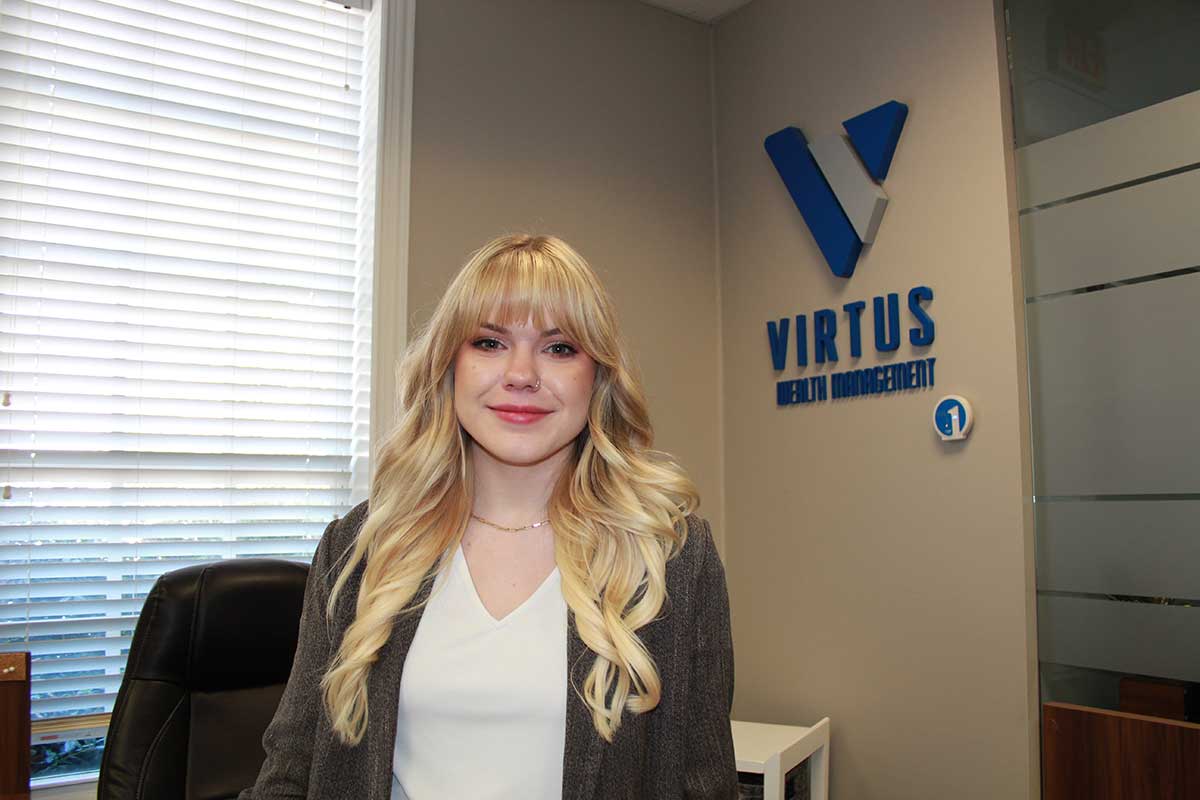I am sharing with you some of the information the Life Insurance Marketing and Research...

At Virtus Wealth Management, many of our clients are still employed. We work with more than just retirees here! We help our clients build their wealth and prepare for retirement down the road. You can be just starting your career, mid-career, or nearing the end of your career. You could be starting with a new company or could have been working for the same company for years. The company could have had the same benefits for years or the benefits could be changing.
The bottom line is this, if you have corporate benefits, we want to maximize the use of them! Corporate benefits could be one of the most cost-effective ways to build wealth. You need to understand your options, and we are here to help. You will hear us say over and over again that we do more than manage portfolios and give investment advice. Helping our clients maximize their employee benefits is part of that “more”. After all, there are many things to consider during open enrollment!
The 401(k) plan comes in two varieties — the Roth 401(k) and the traditional 401(k). Each offers a different type of tax advantage, and both have different rules compared to their IRA counterparts. Choosing the right plan is one of the biggest questions our clients have about their 401(k). It can be a surprisingly complicated choice that depends a lot on your individual financial situation.
Here are some of the key differences:
| TRADITIONAL 401(K) | ROTH 401(K) | |
| Contributions | Contributions are made with pre-tax income, meaning you won’t be taxed on that income in the current year. | Contributions are made with after-tax income, meaning you won’t receive a tax break in the current tax year. |
| Retirement withdrawals | Withdrawals at retirement (after age 59 ½) are treated as ordinary income. | Withdrawals at retirement are tax-free if you’ve had the account for at least 5 years. |
| Employer match | An employer match may be available. | An employer match may be available and is treated as a contribution to a pre-tax account. |
| Required minimum distributions | Yes, starting at age 72. | Yes, starting at age 72. |
| Penalties | Yes, a 10 percent bonus penalty on the full withdrawal amount may be levied on early withdrawals. | Yes, a 10 percent bonus penalty may be levied on any earnings taken through early withdrawals. |
What – For most employees, a defined contribution plan is one of the primary benefits offered by their employer, with a 401(k) being the standard employer-sponsored retirement plan used by for-profit businesses. Employer matching of your 401(k) contributions means that your employer contributes a certain amount to your retirement savings plan based on the amount of your annual contribution.
When – Following are two common types of company contributions.
A partial match means that your employer will match part of the money you put into your 401(k), up to a certain amount. A common partial match provided by employers is 50% of what you contribute, up to 6% of your salary. So, what this means in practical terms is that if you earn $80,000 per year, your contributions that will be eligible for matching are 6% of your salary, or $4,800 in this case. But since your company only offers a 50% partial match, they will match half of the $4,800, or $2,400. To get the maximum amount of 401(k) match, you have to put in 6%. If you put in more, say 8%, your employer will still only match half of 6% of your salary, because that’s their max. The employer has the ability to determine the matching parameters.
With a dollar-for-dollar match, your employer will put in the same amount of money you do — up to a certain amount. An example of dollar-for-dollar is up to 4% of your salary. In this case, if you put in 4%, they put in 4%; if you put in 2%, they put in 2%. If you put in 6%, they still only put in 4%, because that’s their max.
 Where – Employer matches to Traditional 401(k) accounts are made to a Traditional 401(k). Employer matches to Roth 401(k) accounts are made into a Traditional 401(k). This can sometimes surprise or confuse clients, but we can help to answer any questions you may have on where your employer matching goes and how it benefits you.
Where – Employer matches to Traditional 401(k) accounts are made to a Traditional 401(k). Employer matches to Roth 401(k) accounts are made into a Traditional 401(k). This can sometimes surprise or confuse clients, but we can help to answer any questions you may have on where your employer matching goes and how it benefits you.
How – The matches are made at the time of contribution. It is important to spread your contributions out across the calendar year to maximize your match. If, for example, you max out your personal contributions by October, then you will only get matching through October. This is because you are contributing 0% in November and December which results in a 0% match. Pay attention to this.
It’s important to understand the matching rules for your 401(k) plan, but it’s also important to understand the vesting schedule for employer contributions. Vesting refers to how much of the employer contributions actually belong to you — it is based on how long you’ve worked at the company. What this means is that you may actually forfeit your employer match if you leave or are terminated before a certain number of years pass. A typical vesting period for employer 401(k) contributions is five years. So, if you were to leave your employer or be terminated before the vesting period is over, you might lose some or all of the employer contribution.
A plan participant leaving an employer typically has four options (and may engage in a combination of these options), each choice offering advantages and disadvantages.
Each 401(k) comes with investment options. We work with our clients to ensure that all of their investments work together including their 401(k) options. Not all 401(k) plans are created equal and neither are their investment options.
Medical plans can be tricky as there is a lot of deductible, copay, and plan options. We use our experience to help our clients review their options and ask questions. There are situations where the medical plan chosen can help with retirement and/or be a nice tax planning vehicle.
For example, if the High Deductible health plan is a fit for you, then we would look at using a Health Savings Account to fund the deductible. Health Savings Accounts allow for you to save for medical expenses in a tax-free account (if used for medical expenses) or tax deferred account (if not used for medical expenses when you reach 59.5). The account balance in an HSA carries forward year after year.
If your company offers a Flexible Spending Account, we would look at using it to save for annual medical expenses in a tax-free account. The account balance in an FSA does not carry forward year to year so it’s important to estimate your annual medical expense needs and only set aside those funds accordingly.
Group life insurance (offered through a company) is one of the most cost-effective ways of getting life insurance. Often there’s no medical underwriting required. Of course, when you leave the company, you no longer have that coverage, but it is usually good to get if it’s an option.
Basic Life/AD&D – This is coverage paid for and supplied by the company automatically. AD&D is Accidental Death & Dismemberment, and it usually has a higher benefit since the probability of qualifying for the benefit is lower.
Voluntary Life/AD&D – This is additional coverage paid for by the employee. This is where the cost is for you, but again, this coverage is usually cost effective and should be considered.
Group disability insurance (offered through a company) is like group life insurance in that it is cost-effective and is available to you until you leave the company. The purpose of disability insurance is to protect and replace a portion of your income if you suffer a disabling injury or illness that keeps you from earning a living. Disability happens to more people, more often than you may think. In fact, more disabilities are caused by illness than injury, including common conditions like heart disease and arthritis. Your ability to generate income is critical to building wealth and, therefore, insuring it makes total sense! The disability insurance available through corporate benefits is a must and adding an individual, supplemental plan on top of the benefits you can get at work is worth considering to help provide extra financial protection.
A Dependent Care FSA (DCFSA) is a pre-tax benefit account used to pay for eligible dependent care services, such as preschool, summer day camp, before or after school programs, and child or adult daycare. It’s a smart, simple way to save money while taking care of your loved ones so that you can continue to work.
With a Dependent Care FSA, you use pre-tax dollars to pay qualified out-of-pocket dependent care expenses. The money you contribute to a Dependent Care FSA is not subject to payroll taxes, so you end up paying less in taxes and taking home more of your paycheck.
This is an excellent tax savings vehicle if it applies to you!
As you can see, there is a lot involved when it comes to maximizing your corporate benefits. We don’t want this to stress or overwhelm you. In fact, we want to do the opposite: we strive to provide you with the information and options necessary in order for you to feel informed and empowered to make the best decisions for your family and situation. The best place to start is with a complimentary consultation with one of our advisors.
Connect with us today to schedule your complimentary consultation.
The opinions voiced are for general information only and are not intended to provide specific advice or recommendations for any individual.